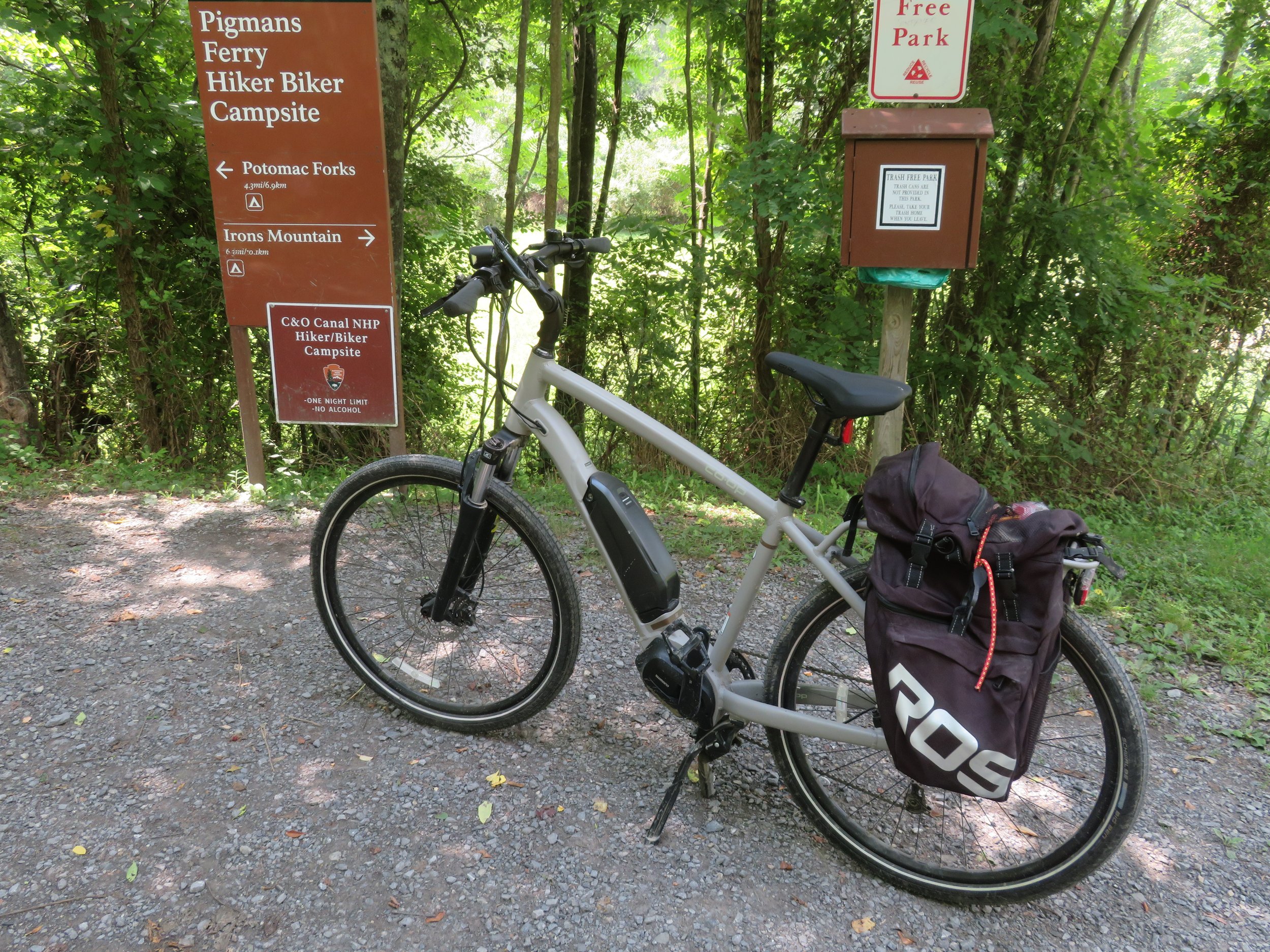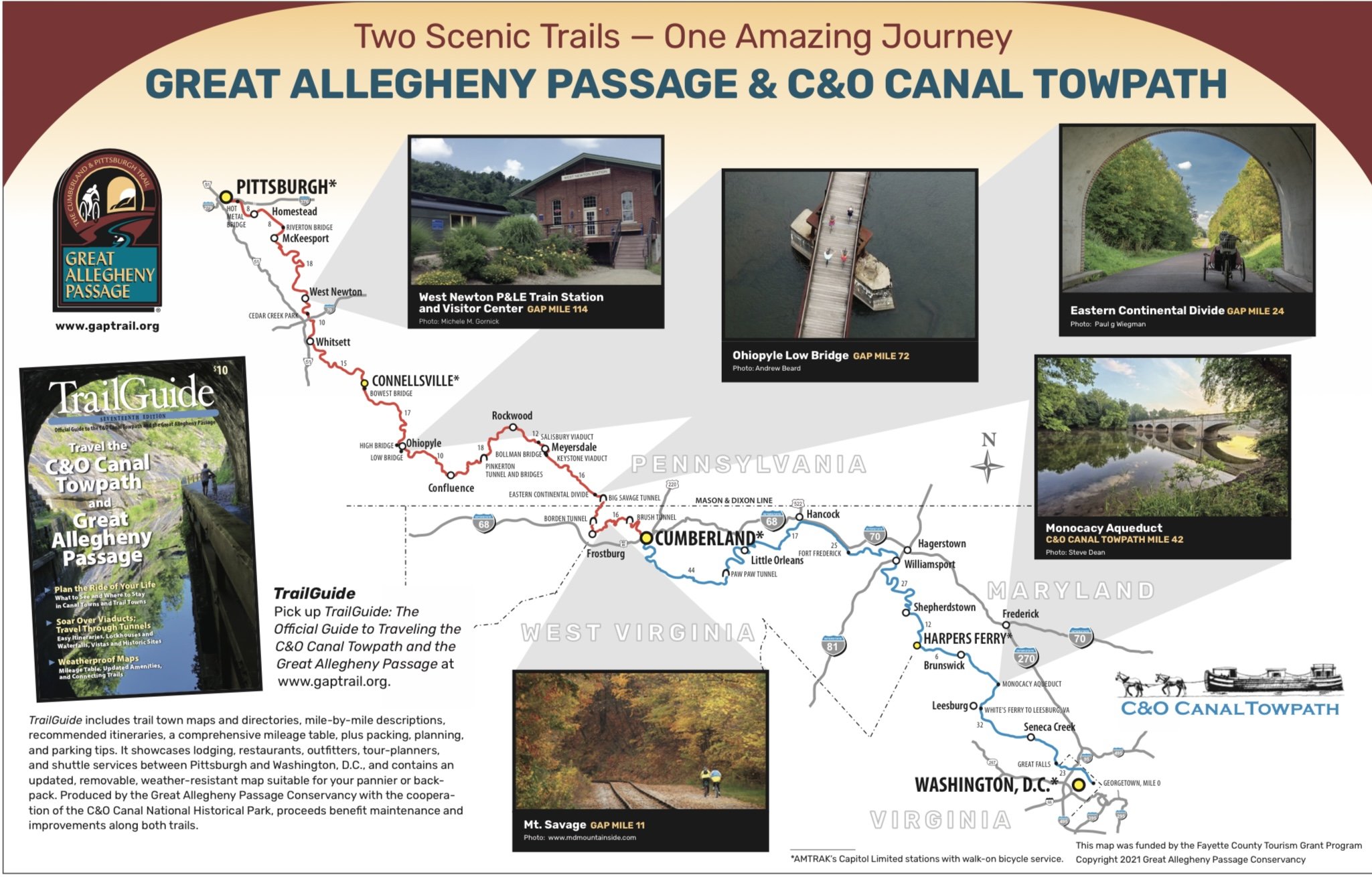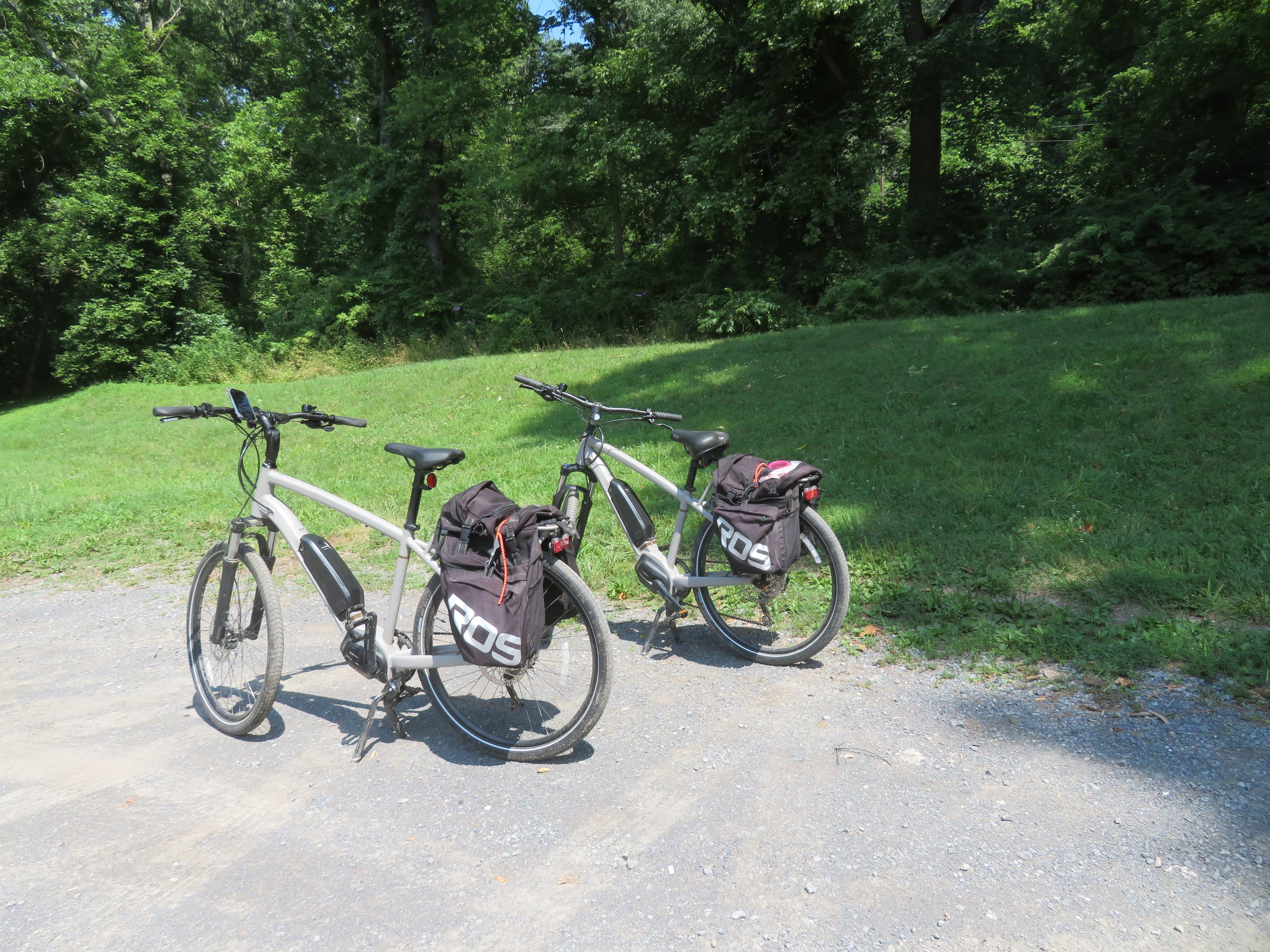Blue View - We’ve Switched to Ebikes
/I’m not sure whether it’s just my curmudgeonly nature, envy, or maybe a little of both, but I’ve long been disparaging of ebikes. I found it to be very irritating to be working hard, pumping my way to the top of a steep hill, and having someone with a big grin fly past us on an electric bike, while not even breaking a sweat. As I started grumbling, Marcie would point out that at least the person was getting some exercise and riding an ebike was better than sitting in front of the tube playing solitaire. All true, but you’ll never see me on one. Well… until now. I’m almost embarrassed to admit, we’ve just made the switch to ebikes.
Why We Considered Ebikes
Earlier this summer, we started making plans to bike a big chunk of the Great American Rail Trail, or GART. As you probably remember, this is the bike path that, when fully completed, will stretch from Washington, D.C. to the Pacific coast west of Seattle. We thought that once we finished driving the Great Northern Route on U.S. 2, we’d head south and start riding a section of the GART. The Great Allegheny Passage, a 150 mile trail from Pittsburgh to Cumberland, Maryland seemed ideal. If that went well, we’d try the C&O Canal Trail from Cumberland to DC, then perhaps go back to Pittsburgh and see how far west we could get.
When we did other, multi-day sections of the GART in Nebraska, Idaho, and Washington, we had our $90 Walmart Roadmaster bikes, and averaged about twenty two miles a day - a pretty paltry amount for serious bikers. We found that we were limited to four or five hours of riding a day. It wasn’t our legs that were giving out, it was our butts. We tried quality, padded biking shorts, better seats, and copious amounts of Chamois Butt’r, all of which helped, but didn’t eliminate the chafing problem or the discomfort around our “sit bones”(a real biker’s term, BTW).
It would be great if we could increase our average daily miles to, say, 35-40 miles per day, but since I doubted we’d be able to sit in the saddle for any longer than the 4-5 hours we’re able to do now, maybe it was time to think about better bikes. Those clunky, heavy Roadmasters were slow and tough to pedal up hills, especially when loaded down with all the gear we needed for several days of bike packing. So we sold them and began looking for better replacements.
I suggested to Marcie that she might want to consider getting an ebike, while I, being the macho, tough guy I am, would look for a good, heavy duty touring bike. She was somewhat receptive to the idea, but only if I considered one as well. I agreed to “consider” an ebike, but I was really not that enthusiastic about it.
Types of Ebikes
I did a lot of research. The first thing I discovered was that there are three classes of ebikes. A Class 1 ebike is a bike that has a motor that assists only when the bike is being pedaled, and only assists up to a maximum speed of 20 mph. A Class 2 ebike has a motor that is controlled by a throttle. You can pedal a Class 2 bike, or you can use the motor to propel you along… sort of a motorbike with pedals. It also has a maximum speed of 20 mph. A Class 3 ebike is like a Class 1, except that the maximum speed of the power assist is 28 mph. In addition, there are companies that make hybrids of the Class 2 and Class 3 bikes. These are pedal assisted, but the motor can also be controlled by a throttle, and often a maximum motor speed of 28 mph.
I also learned that many hiking trails don’t allow ebikes, but those that allow bikes at all often permit Class 1 ebikes as well. Class 2 and Class 3 ebikes are usually considered motorized vehicles and prohibited. The more research I did, the more I started liking the idea of ebikes, especially the Class 1 variety.
Which Ebike?
We decided on REI Class 1 ebikes. There were several reasons for our decision. Their ebikes got good reviews by both users and the pros; there are two REI stores in Las Vegas, so we could have them shipped to and assembled by the closest one; and they provide a year of free tune-ups at any REI location. Best of all, REI has a no-questions-asked, one year return policy, so if I decided an ebike wasn’t for me, I could return it. We decided to order two and see whether we liked them.
Do We Like Them?
We have a few hundred miles on our ebikes now, and the answer to that question is a resounding yes. They’re about fifteen pounds heavier than our old bikes, but even so, without using the motor assist, the ebike is still much easier to pedal and ride than the Roadmasters were. There are three assist levels, Eco, Normal and High. With my bike fully loaded, I can manage about 10 mph on a flat, packed gravel trail with no assist and with moderate to heavy exertion. In Eco mode, the same amount of exertion will move me at about 13 mph, Normal mode increases my speed another 3 mph to 16 mph, and in High, my speed increases to about 19 mph.
When I’m fresh in the morning and the terrain is flat, I’ll ride with the motor turned off. With hilly terrain, I usually use Eco mode while Marcie switches between Eco and Normal, and we’ve been averaging just around 12 mph… a major improvement over 5-6 mph we were averaging with the old bikes. If we have a long grade, and/or I’m getting tired, I’ll move to Normal, and on a few occasions while climbing a steep hill, I’ve used High. My range, using Eco mode is around 70 miles, which drops to about 50 miles in Normal mode - more than enough for our daily rides.
The biggest downside is that we have to recharge each night. If we camp in a place that has no electricity, our batteries will likely go flat the next day, but even so, we can still pedal them, and we’re no worse off than when we were riding our old Roadmasters.
I do, however, feel guilty when I pass someone working hard to get up a hill on a standard bike, but perhaps a little less than I might if I wasn’t riding a Class 1 ebike. At least I’m probably sweating just as much as he or she is. And, while I may smile and wave, I never grin as I pass…








